Hey there, EcoDwellers! Welcome back to EcoDweller.com, your go-to spot for simple, beginner-friendly sustainable living tips. Today, we’re diving into how to cut kitchen waste—one of the easiest ways to start your eco-friendly journey. The kitchen is often where most household waste happens: food scraps, plastic packaging, and expired groceries can pile up fast. But with a few simple changes, you can cut kitchen waste and make your kitchen more sustainable. In this post, I’ll share 10 practical hacks to help you reduce waste, save money, and live greener. Let’s make your kitchen a zero-waste haven!
Why It’s Important to Cut Kitchen Waste
Reducing kitchen waste isn’t just good for the planet—it’s great for your wallet too. According to the USDA, 30-40% of the food supply in the US goes to waste, much of it from households. That’s a lot of food (and money!) ending up in landfills, where it releases methane—a greenhouse gas 25 times more potent than CO2, per the EPA. By learning to cut kitchen waste, you’re minimizing your environmental impact, conserving resources, and embracing a more sustainable lifestyle as an EcoDweller. Ready to get started? Here are 10 hacks to help you cut kitchen waste today!
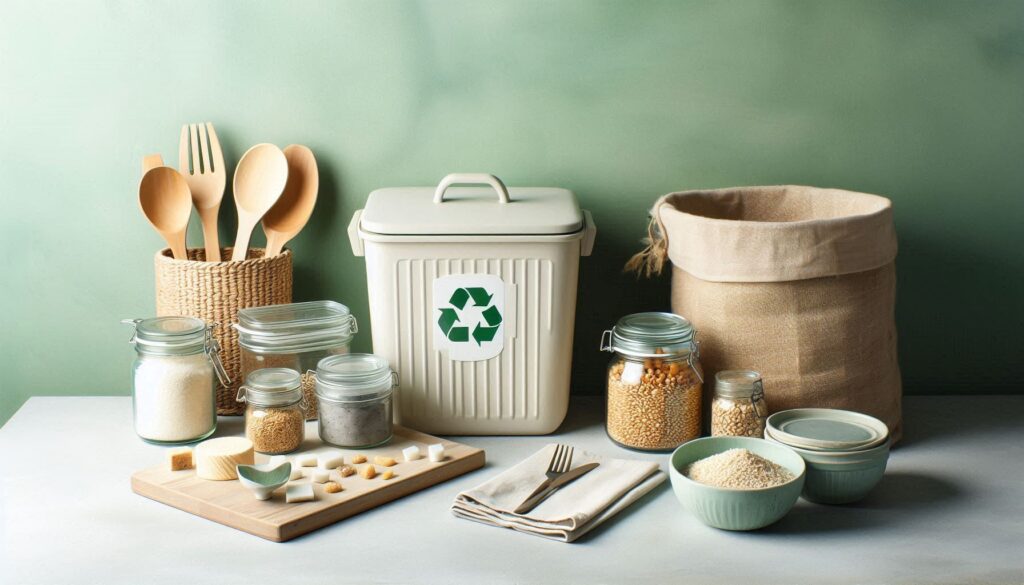
Hack 1: Plan Your Meals to Reduce Food Waste
One of the biggest reasons food gets wasted is overbuying. To cut kitchen waste, create a weekly meal plan and stick to a shopping list. Buy only what you need to avoid spoilage. Before heading to the store, check your fridge and pantry to avoid duplicates, and organize food by expiration date so older items are used first.
Why it works: Meal planning ensures you only buy what you’ll use. The USDA estimates that the average family of four throws away $1,500 worth of food annually—let’s keep that money in your pocket!
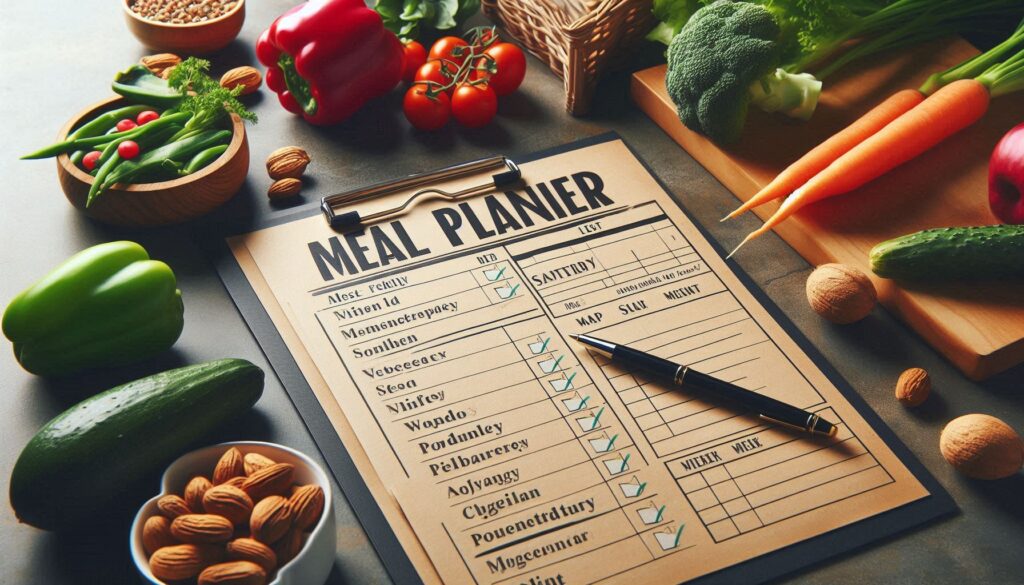
Hack 2: Store Food Properly
Using the right storage methods can help food last longer and cut kitchen waste. Keep leafy greens in a container with a paper towel to absorb moisture, and store grains and nuts in airtight glass jars to keep them fresh. Label leftovers with the date so you don’t forget to eat them before they go bad.
Pro tip: Freeze overripe fruits for smoothies or baking—they’ll last for months! Proper storage is a simple way to reduce waste and keep your kitchen organized.
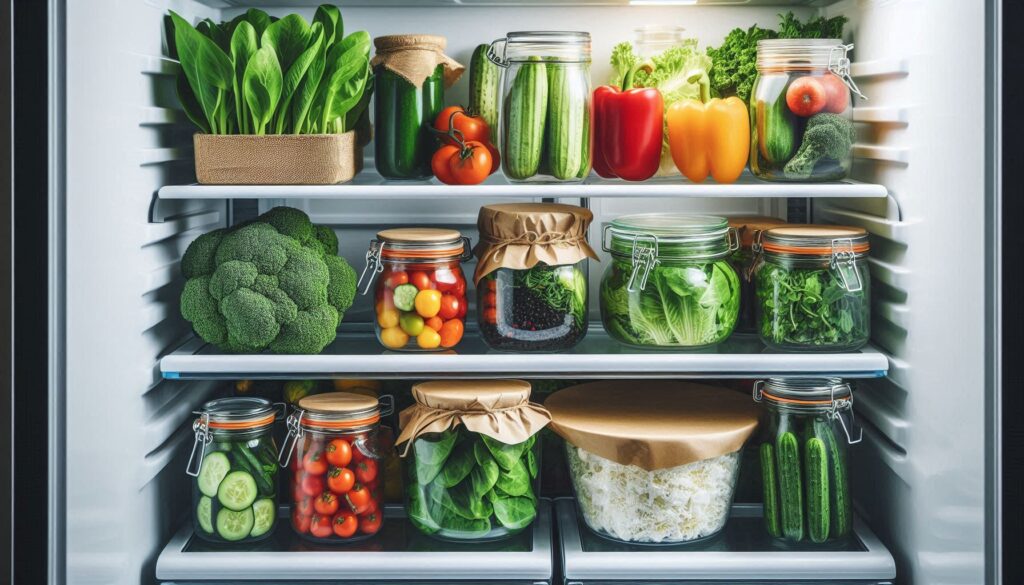
Hack 3: Use Reusable Containers and Wraps
Ditch single-use plastic wraps and switch to reusable beeswax wraps or silicone food covers to cut kitchen waste. Instead of plastic storage bags, invest in glass or stainless steel containers—they last longer, reduce plastic waste, and keep food fresher.
These swaps are a key part of a zero-waste kitchen. Check out our 10 Must-Have Eco-Friendly Products for more reusable options to make your kitchen greener!
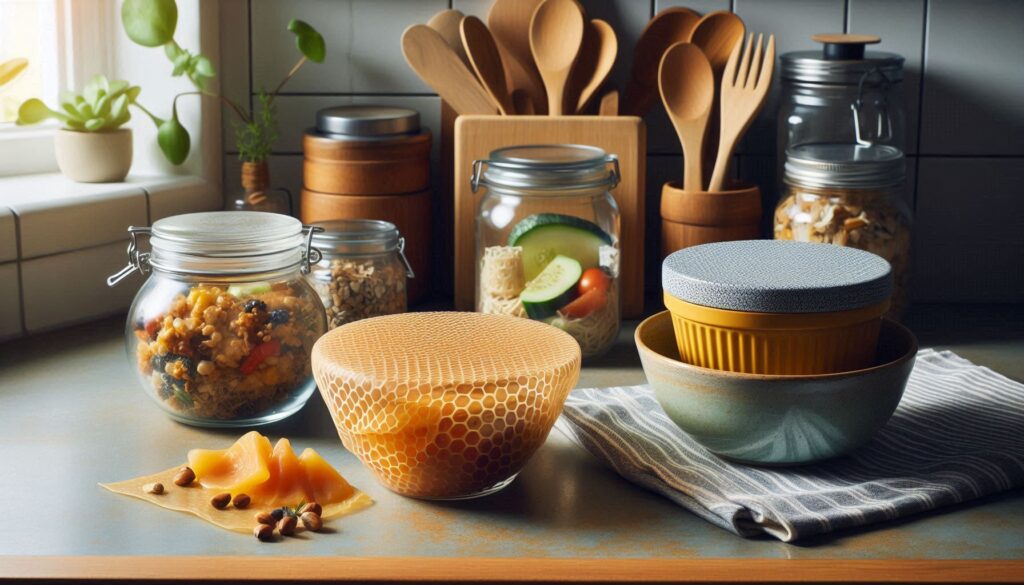
Hack 4: Compost Your Food Scraps
Not all food waste can be avoided, but composting helps you cut kitchen waste by turning scraps into nutrient-rich soil. If you don’t have a backyard, try a small compost bin for your kitchen, like the Bamboozle Compost Bin. Many cities also have composting programs, so check for local options.
Composting keeps organic waste out of landfills, where it would release methane. We covered composting basics in our Zero Waste 101 guide—check it out for more tips!
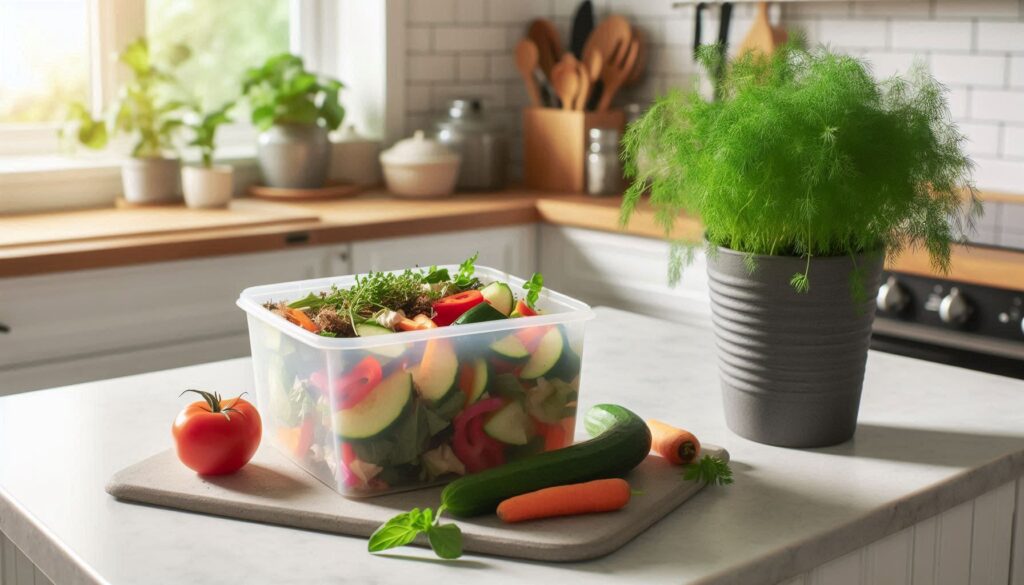
Hack 5: Buy in Bulk and Avoid Plastic Packaging
Bulk buying is a great way to cut kitchen waste by reducing packaging. Bring your own containers to bulk stores for grains, spices, and dry goods. Avoid products wrapped in excessive plastic and choose glass, metal, or paper packaging instead.
Why it works: Less packaging means less waste. Stores like Whole Foods often have bulk sections where you can fill up sustainably.
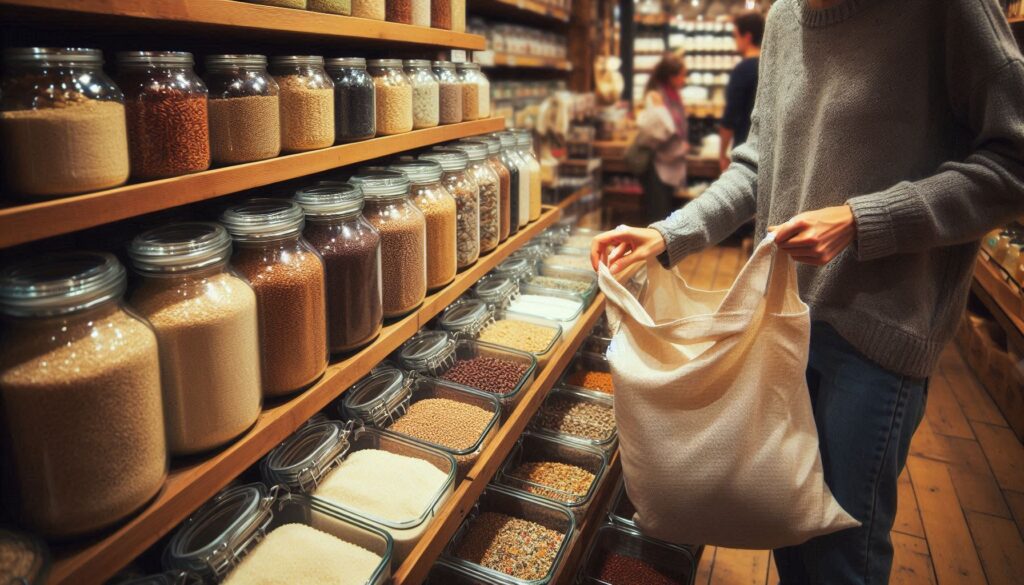
Hack 6: Get Creative with Leftovers
Leftovers don’t have to be boring—they can help you cut kitchen waste! Use vegetable scraps to make broth, turn stale bread into croutons, or blend overripe fruits into smoothies. For example, I love turning leftover roasted veggies into a hearty soup for the next day.
Repurposing leftovers saves money and reduces waste. The Natural Resources Defense Council suggests that using every part of your food can cut your waste by up to 20%.

Hack 7: Switch to Reusable Kitchen Essentials
Replace paper towels with washable cloths, use biodegradable sponges, and opt for wooden or metal kitchen tools instead of plastic ones to cut kitchen waste. These small swaps make a big impact over time and reduce your reliance on single-use items.
For more reusable kitchen ideas, check out our DIY Eco-Friendly Cleaning Products post for tips on greening your cleaning routine!

Hack 8: Choose Eco-Friendly Dishwashing Methods
Conventional dish soaps often contain chemicals that harm the environment. To cut kitchen waste and clean sustainably, switch to biodegradable, plant-based soaps like those from Seventh Generation. If you use a dishwasher, only run it when full to save water and energy.
This hack reduces your environmental footprint while keeping your dishes sparkling clean. Small changes in your dishwashing routine can go a long way!

Hack 9: Support Local and Seasonal Foods
Buying local and seasonal produce helps cut kitchen waste by reducing carbon emissions from transportation and supporting sustainable farming. Visit farmers’ markets or join a community-supported agriculture (CSA) program to get fresh, in-season fruits and veggies.
Why it works: Local produce is fresher, lasts longer, and often comes with less packaging. It’s a win for both the planet and your plate!
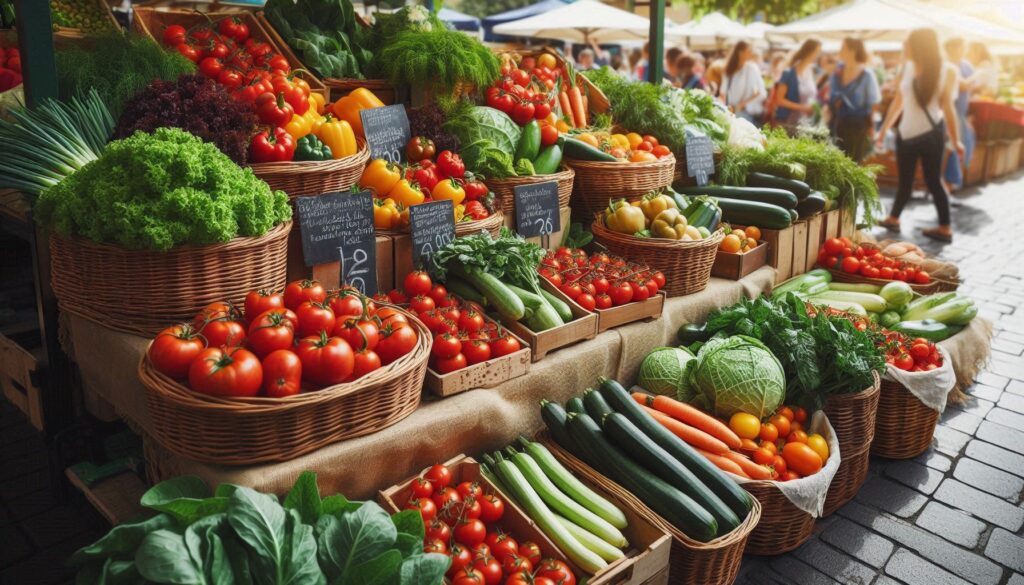
Hack 10: Reduce Energy Use in the Kitchen
Energy-efficient appliances save power, money, and help you cut kitchen waste indirectly by reducing your overall environmental impact. Use lids while cooking to reduce heat loss, opt for energy-saving cooking methods like steaming, and unplug appliances when not in use to avoid phantom energy use.
According to the U.S. Department of Energy, phantom energy can account for 10% of your bill—let’s save that energy for the planet!
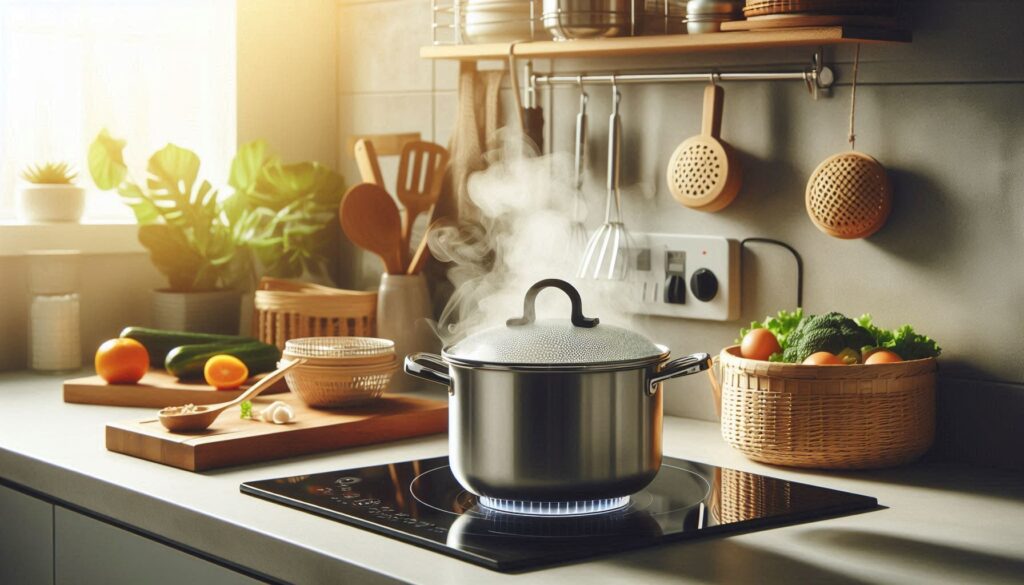
Your Kitchen, Greener Than Ever!
With these 10 hacks, you’re well on your way to cut kitchen waste and make your kitchen a sustainable space. Start with one or two—like meal planning or composting—and build from there. Want more zero-waste tips? Revisit our Zero Waste 101 guide or check out The EcoDweller’s Guide to Sustainable Living for a big-picture look at going green.

